
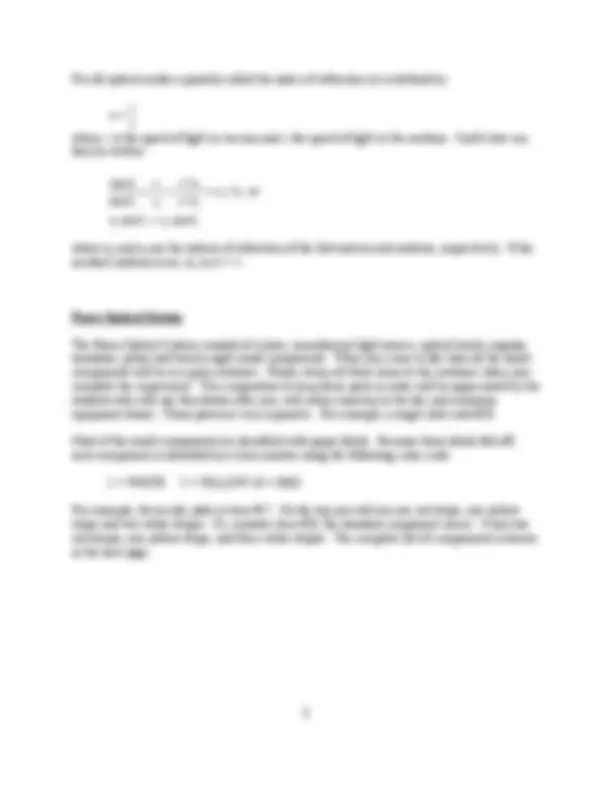
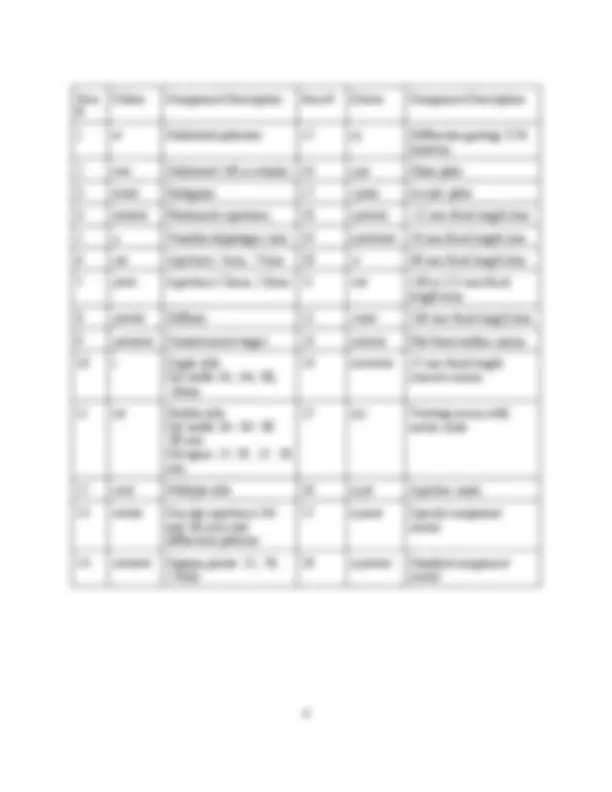
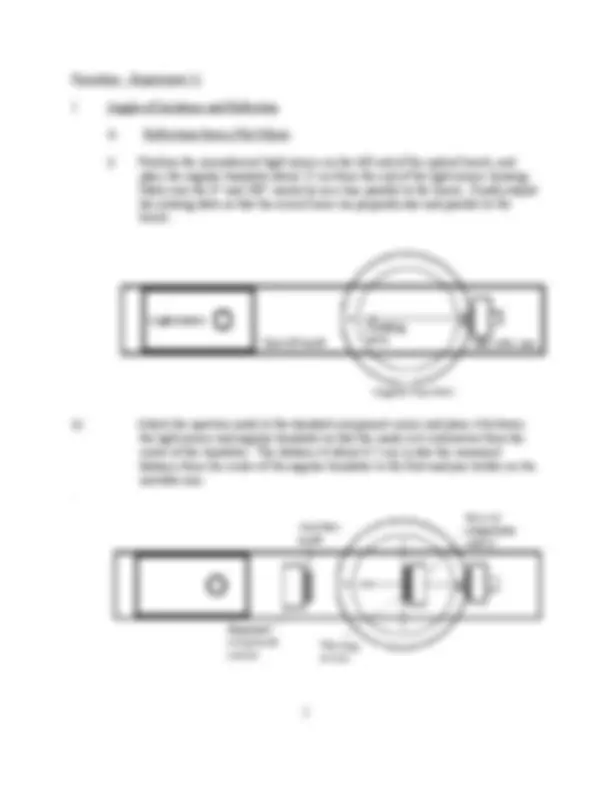
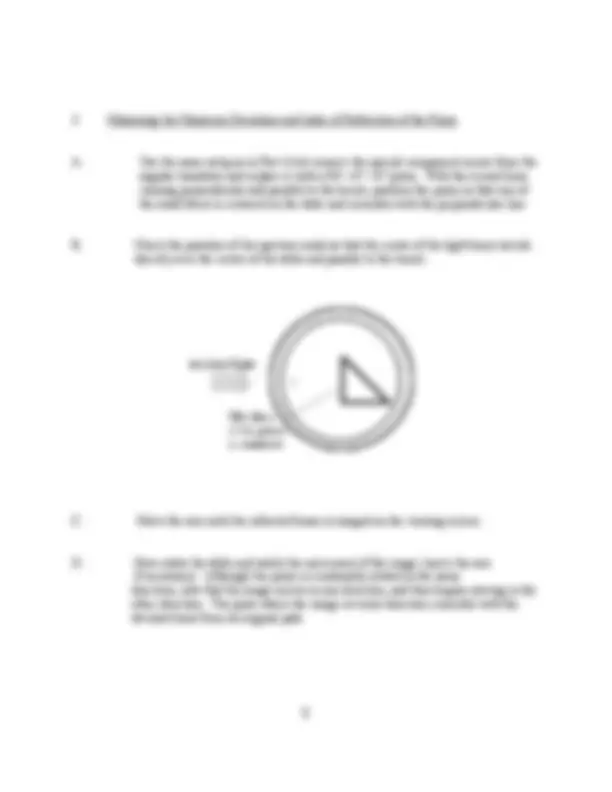
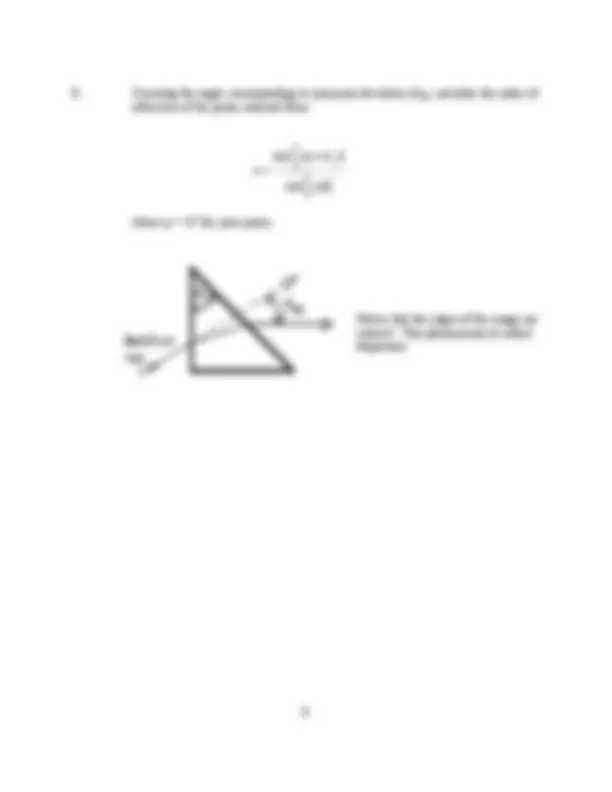
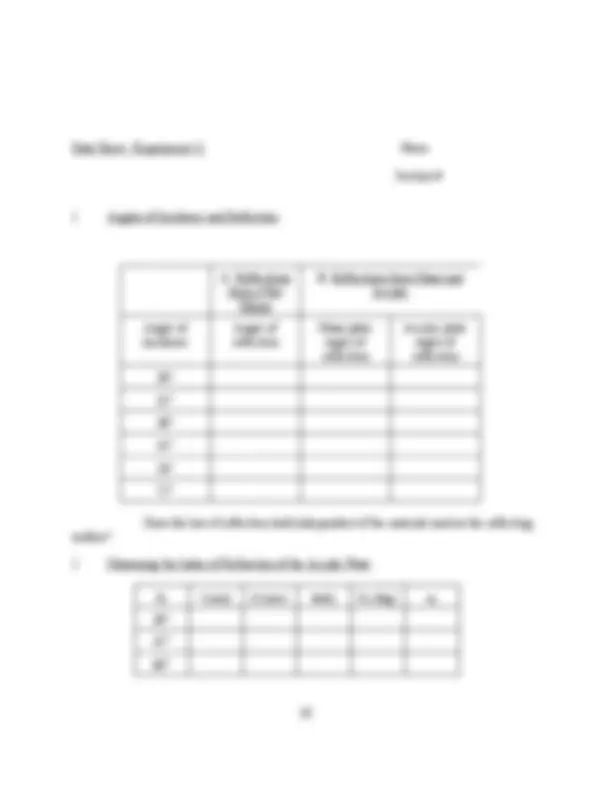


Study with the several resources on Docsity

Earn points by helping other students or get them with a premium plan


Prepare for your exams
Study with the several resources on Docsity

Earn points to download
Earn points by helping other students or get them with a premium plan
Community
Ask the community for help and clear up your study doubts
Discover the best universities in your country according to Docsity users
Free resources
Download our free guides on studying techniques, anxiety management strategies, and thesis advice from Docsity tutors
The procedures for experiment 11 in university physics lab ii, focusing on geometrical optics, specifically reflection and refraction. The experiment involves using equipment such as an incandescent light source, optical bench, angular translator, and various components like glass plates, acrylic plates, mirrors, and prisms. Students will investigate the laws of reflection and refraction, including snell's law, and measure the indices of refraction for different materials.
Typology: Lab Reports
1 / 11

This page cannot be seen from the preview
Don't miss anything!







Experiment 11
Geometrical Optics: Reflection and Refraction
Equipment: Incandescent light source, optical bench, angular translator.
Supplies: Standard component carrier, special component carrier, glass plate, acrylic plate, flat front surface mirror, viewing screen with metric scale, aperture mask, 90E- 45 E-45Eprism.
A. Reflection
When light strikes the surface of material, some light is usually reflected. The reflection of light rays from a plane surface like a glass plate or a plane mirror is described by the law of reflection :
The angle of incidence is equal to the angle of reflection (i.e., θi = θr).
These angles are measured from a line perpendicular or normal to the reflecting surface at the point of incidence as shown below.
The rays from an object reflected by a smooth plane surface appear to come from an image behind the surface, as shown in the figure. From equal triangles (in the figure above) it can be seen that the image distance di from the reflecting surface is the same as the object distance d 0. Such reflection is called regular or specular reflection. The law of reflection applies to any reflecting surface. If the surface is relatively rough, like the paper of this page, the reflection will become diffused or mixed, so that no image of the source or object will be produced. This type of reflection is called irregular or diffuse reflection.
B. Refraction
When light passes from one medium into an optically different medium at an angle other than normal to the surface, it undergoes a change in direction, as illustrated in the figure below for two parallel light ray in a beam of light. This is due to the different velocities of light in the different media. In the case of refraction, θ 1 is the angle of incidence and θ 2 is the angle of refraction.
From the geometry of this figure we have
d
v 1 t
v 2 t
2
1 2
1 sin
sin v
This equation is known as Snell's law. If v 1 > v 2 (as in the figure above), the rays are bent toward the normal in the second medium. And if v 1 < v 2 , the rays are bent away from the normal.
Item
Colors Component Description Item # Colors Component Description
1 w Calibrated polarizer 15 ry Diffraction grating 5276 lines/cm
2 ww Calibrated 140 m retarder 16 ryw Glass plate
3 www Hologram 17 ryww Acrylic plate
4 wwww Photometer apertures 18 rywww -22 mm focal length lens
5 y Variable diaphragm (iris) 19 rywwww 18 mm focal length lens
6 yw Apertures .5mm, .75mm 20 rr 48 mm focal length lens
7 yww Apertures 1.0mm, 2.0mm 21 rrw 138 or 152 mm focal length lens
8 ywww Diffuser 22 rrww 238 mm focal length lens
9 ywwww Crossed arrow target 23 rrwww Flat front surface mirror
10 r Single slits Slit width .02,. 04, .08, .16mm
24 rrwwww 25 mm focal length concave mirror
11 rw Double slits Slit width .04 .04. .08 mm Slit space .25 .50 .25. mm
25 rry Viewing screen with metric scale
12 rww Multiple slits 26 rryw Aperture mask
13 rwww Circular apertures (. and .08 mm) and diffraction patterns
27 rryww Special component carrier
14 rwwww Opaque points .25,. 50, 1.0mm
28 rrywww Standard component carrier
Procedure - Experiment 11
A. Reflections from a Flat Mirror
i) Position the incandescent light source on the left end of the optical bench, and place the angular translator about 25 cm from the end of the light source housing. Make sure the 0E and 180E marks lie on a line parallel to the bench. Finally adjust the rotating table so that the scored lines run perpendicular and parallel to the bench.
ii) Attach the aperture mask to the standard component carrier and place it between the light source and angular translator so that the mask is d centimeters from the center of the translator. The distance d (about 6.5 cm) is also the measured distance form the center of the angular translator to the first analyzer holder on the movable arm. .
A. Using the same set-up as in part A, place the acrylic plate on the rotating table so that its front surface coincides with the perpendicularly scored line on the table.
B. Place the viewing screen on a special component carrier and put the combination in contact with the back surface of the acrylic plate. The center of the viewing screen should line up with the parallel scored line on the table.
C. With the acrylic plate sitting perpendicular to the bench, adjust the position of the aperture mask so that one vertical edge of the image on the screen lines up with the center of the viewing screen.
D. Rotate the table and record what happens to the previously centered edge. The figure below shows how to calculate in index of refraction give the angle of rotation and edge displacement of the image.
Measure the thickness of the plate (t). For three angles of incidence (θ 1 = 30, 45, and 60E) measure d, calculate tanθ 2 , and determine the index of refraction of acrylic. The three values should differ only by experimental error.
A. Use the same setup as in Part A but remove the special component carrier from the angular translator and replace it with a 90E-45E-45Eprism. With the scored lines running perpendicular and parallel to the bench, position the prism so that one of the small faces is centered on the table and coincides with the perpendicular line.
B. Check the position of the aperture mask so that the center of the light beam travels directly over the center of the table and parallel to the bench.
C. Move the arm until the refracted beam is imaged on the viewing screen.
D. Now rotate the table and watch the movement of the image (move the arm if necessary). Although the prism is continually rotated in the same direction, note that the image moves in one direction, and then begins moving in the other direction. The point where the image reverses direction coincides with the deviated least from its original path.
Data Sheet - Experiment 11 Name
Section #
A. Reflections from a Flat Mirror
B. Reflections from Glass and Acrylic
Angle of incidence
Angle of reflection
Glass plate angle of reflection
Acrylic plate angle of reflection
30 E
35 E
40 E
45 E
50 E
55 E
Does the law of reflection hold independent of the material used as the reflecting surface?
θ 1 t (mm) d (mm) tanθ 2 θ 2 (deg) n 2
30 E
45 E
60 E
Angle of minimum deviation θm = deg
Index of refraction of the prism calculated from
n = m
sin ( ) sin ( )
1 2 1 2
.